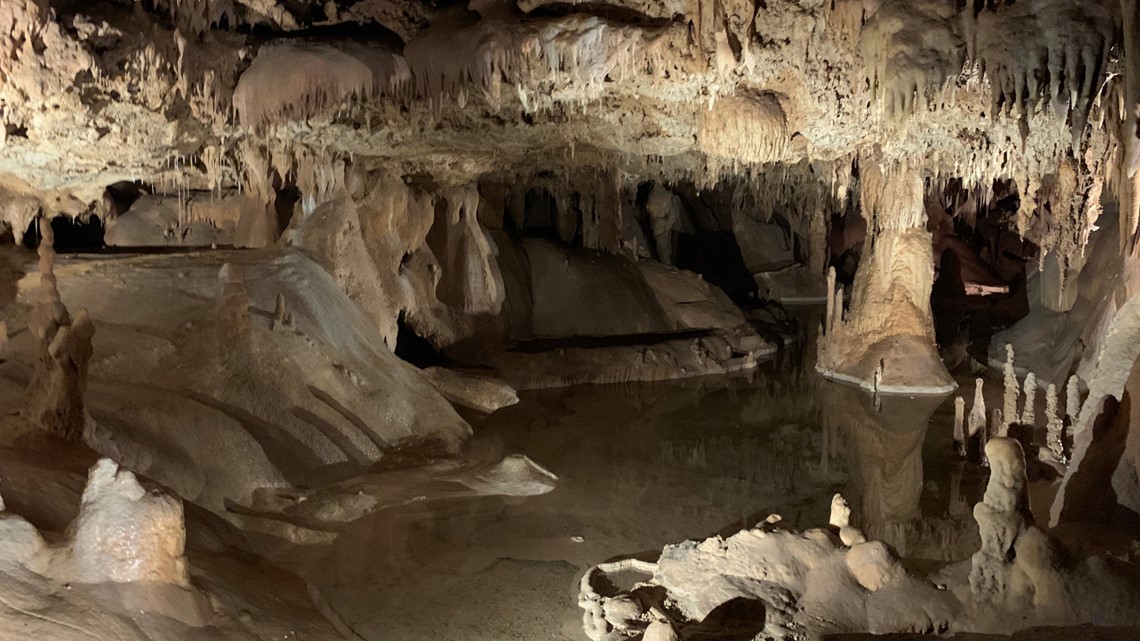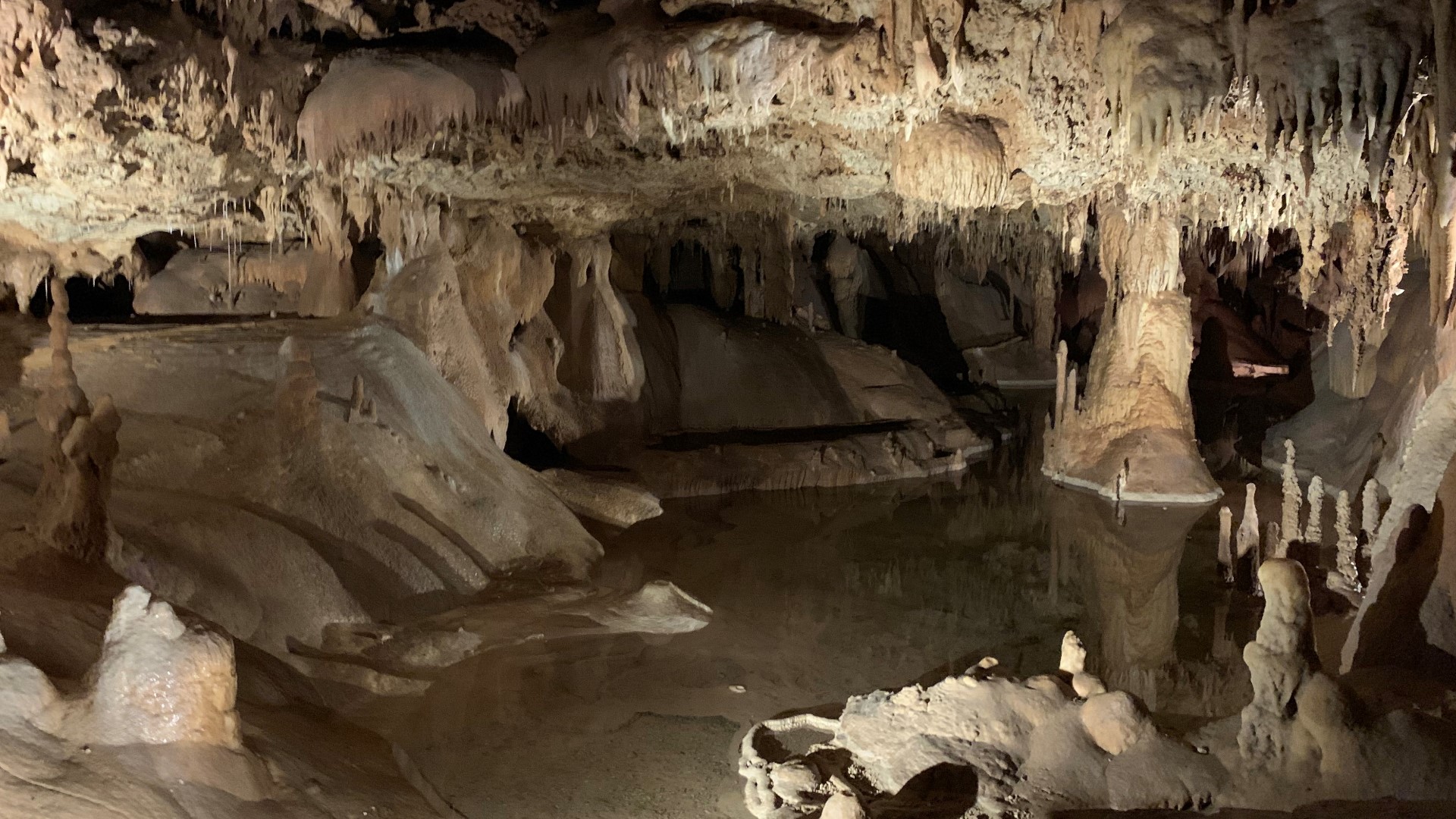GEORGETOWN, Texas — Let your cave adventure begin in Georgetown, Texas!
Inner Space Cavern is a Central Texas destination full of natural beauty and history. The cave was discovered in 1963 by the Texas Highway Department then opened for public tours three years later.
There are many tours you can take with your family, like the Hidden Passage Tour and Adventure Tour. If you want to get down and dirty while exploring, the Wild Cave Tour may be the one for you, but it's not recommended if you’re claustrophobic.
Each tour varies in time and price, but most cavern enthusiasts choose the adventure tour, which takes about an hour. Get ready to say, “ahh,” and “ohhh,” when you step inside. And don’t forget your camera!
On the tour, there is a noticeable difference in temperature the farther you step inside the cave. The temperature sits at 72 degrees with 90 percent humidity, so it feels like the upper 70s to low 80s. Pretty nice, right? The average ground temperature in Georgetown is 72 degrees and that’s why the cave sits at 72 degrees. The temperature stays the same because the cave is underground and not impacted by surface weather conditions.
The nice underground temperature attracted many species years ago. Inside the cave, there are bones of mammoth, saber-tooth cats, and an extremely large armadillo the size of a Volkswagen van.
“We found 44 different species of animal, 11 of which are now extinct,” according to Inner Space Cavern.
To this day, bats still hang out in the cave, but they are sometimes hard to find.
The cave itself consists of mostly limestone and dolomite. There are many unique rock formations such as stalactites, stalagmites, columns, drapery, and a huge sinkhole. The adventure tour will take visitors around the sinkhole, which is about the size of a football field.
What’s the science behind stalagmites and stalactites?
A stalagmite grows upward from the floor and they are all over the cavern. As water drops full of calcium carbonate fall the floor, over time-- thousands of years-- a stalagmite will form.


Stalactites hang from the ceiling, like an icicle, and the process starts as a very small soda straw. The soda straws on the ceiling will eventually get clogged with calcite then grow thicker due to precipitation of calcite on the outside.
There are a lot of columns, which are stalagmites and stalactites that grow together.
We don’t want to spoil the entire cavern, so lace up your shoes and go explore the cave to see what all the hype is about!
Other popular stories on KCENTV.com:

